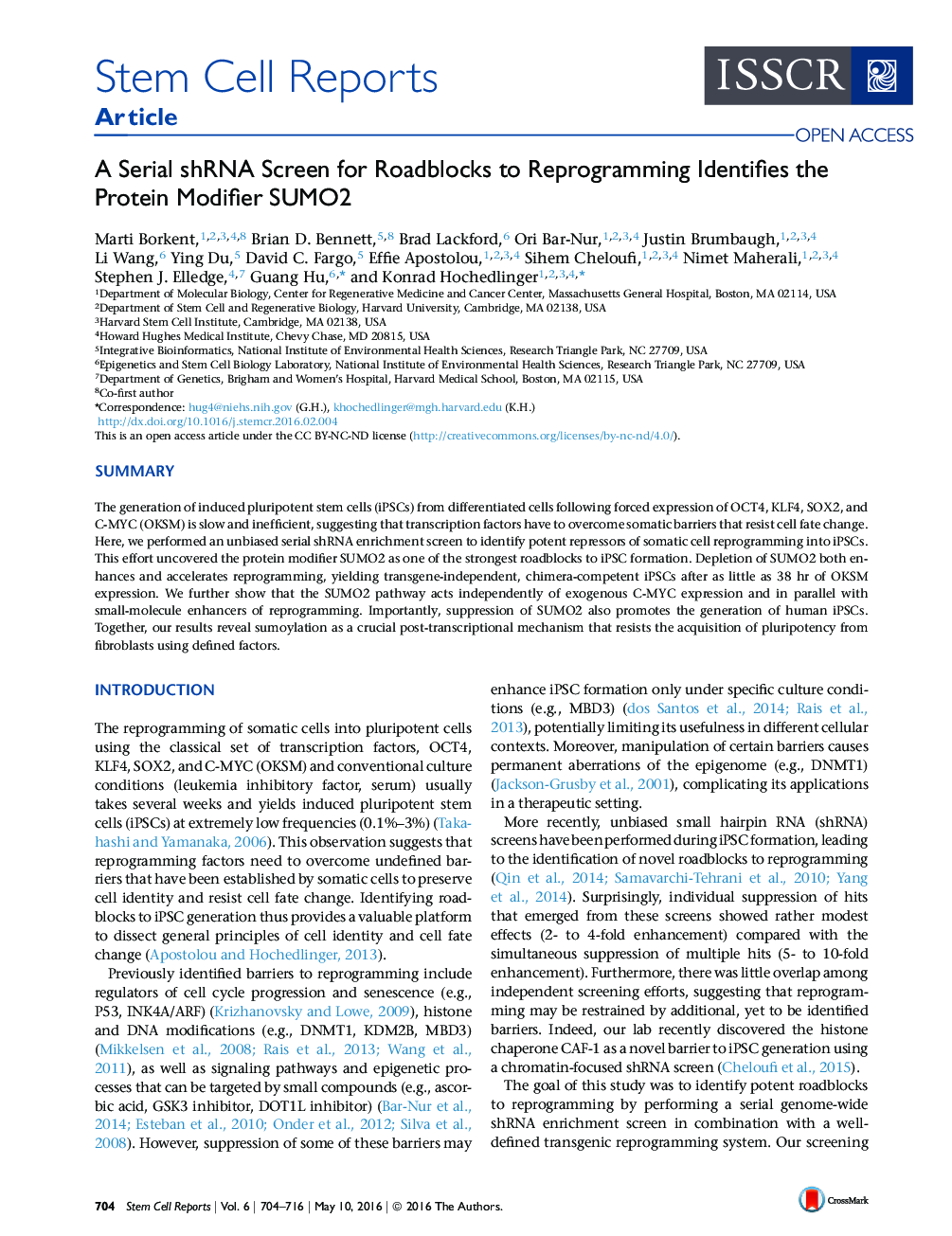| Article ID | Journal | Published Year | Pages | File Type |
|---|---|---|---|---|
| 2093229 | Stem Cell Reports | 2016 | 13 Pages |
•Genome-wide serial shRNA screen identifies novel barriers to reprogramming•Suppression of sumoylation factor SUMO2 enhances reprogramming in mouse and human•SUMO2 suppression works in concert with small molecules and in the absence of c-Myc•SUMO2 suppression enables iPSC generation after only 38 hr of OKSM expression
SummaryThe generation of induced pluripotent stem cells (iPSCs) from differentiated cells following forced expression of OCT4, KLF4, SOX2, and C-MYC (OKSM) is slow and inefficient, suggesting that transcription factors have to overcome somatic barriers that resist cell fate change. Here, we performed an unbiased serial shRNA enrichment screen to identify potent repressors of somatic cell reprogramming into iPSCs. This effort uncovered the protein modifier SUMO2 as one of the strongest roadblocks to iPSC formation. Depletion of SUMO2 both enhances and accelerates reprogramming, yielding transgene-independent, chimera-competent iPSCs after as little as 38 hr of OKSM expression. We further show that the SUMO2 pathway acts independently of exogenous C-MYC expression and in parallel with small-molecule enhancers of reprogramming. Importantly, suppression of SUMO2 also promotes the generation of human iPSCs. Together, our results reveal sumoylation as a crucial post-transcriptional mechanism that resists the acquisition of pluripotency from fibroblasts using defined factors.
Graphical AbstractFigure optionsDownload full-size imageDownload as PowerPoint slide
